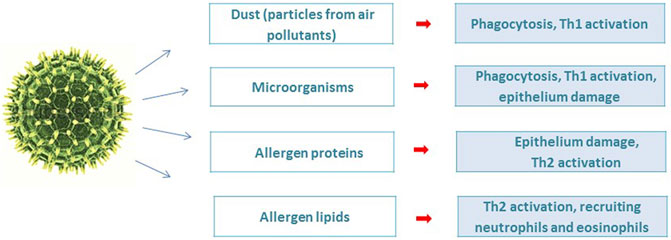Svetlana V. Guryanova1,2, Ekaterina I. Finkina1, Daria N. Melnikova1, Ivan V. Bogdanov1, Barbara Bohle3 and Tatiana V. Ovchinnikova1,4*
- 1Science-Educational Center, M. M. Shemyakin & Yu. A. Ovchinnikov Institute of Bioorganic Chemistry, The Russian Academy of Sciences, Moscow, Russia
- 2Medical Institute, Peoples’ Friendship University of Russia, The Ministry of Science and Higher Education of the Russian Federation, Moscow, Russia
- 3Department of Pathophysiology and Allergy Research, Center for Pathophysiology, Infectiology and Immunology, Medical University of Vienna, Vienna, Austria
- 4Department of Biotechnology, I.M. Sechenov First Moscow State Medical University (Sechenov University), Moscow, Russia
Plant pollen is one of the main sources of allergens causing allergic diseases such as allergic rhinitis and asthma. Several allergens in plant pollen are panallergens which are also present in other allergen sources. As a result, sensitized individuals may also experience food allergies. The mechanism of sensitization and development of allergic inflammation is a consequence of the interaction of allergens with a large number of molecular factors that often are acting in a complex with other compounds, for example low-molecular-mass ligands, which contribute to the induction a type 2-driven response of immune system. In this review, special attention is paid not only to properties of allergens but also to an important role of their interaction with lipids and other hydrophobic molecules in pollen sensitization. The reactions of epithelial cells lining the nasal and bronchial mucosa and of other immunocompetent cells will also be considered, in particular the mechanisms of the activation of B and T lymphocytes and the formation of allergen-specific antibody responses.

 Ekaterina I. Finkina
Ekaterina I. Finkina Daria N. Melnikova
Daria N. Melnikova Ivan V. Bogdanov
Ivan V. Bogdanov Barbara Bohle
Barbara Bohle Tatiana V. Ovchinnikova
Tatiana V. Ovchinnikova
No comments:
Post a Comment